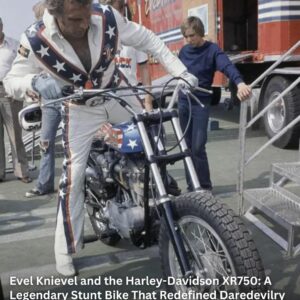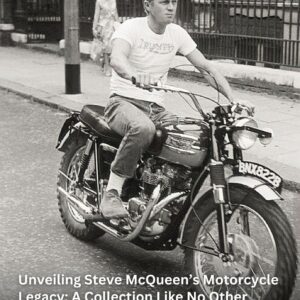The Harley-Davidson 74ci Model V and Sidecar 1930 holds a special place in the history of American motorcycles. Representing a pivotal moment for Harley-Davidson, it was the first Big Twin to feature a sidevalve engine, marking a departure from the brand’s traditional F-head designs. Amidst the challenges of the Great Depression, this model embodied innovation, resilience, and the enduring legacy of the Harley-Davidson brand.
Introduction to the Harley-Davidson 74ci Model V and Sidecar 1930
The Harley-Davidson 74ci Model V, introduced as part of the V-series in 1930, was a major milestone for the company. This model was designed with a sidevalve engine, which offered improved tractability and smoother riding compared to earlier engines. The 74ci Model V’s design and technology made it a standout in its era, even though it was not without its challenges.
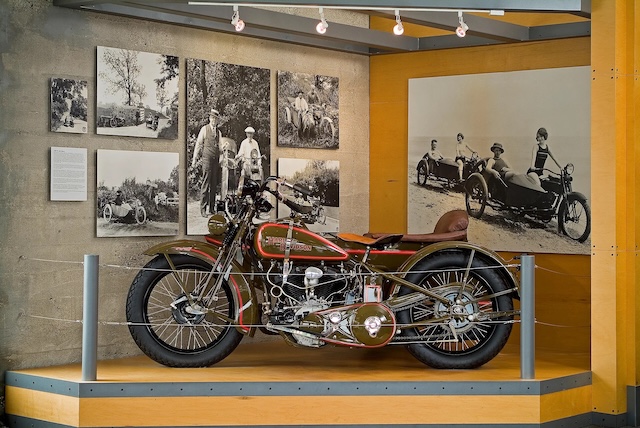
Historical Context and Production Challenges
The 74ci Model V was released during the Great Depression, an era when many consumers could not afford luxury items like motorcycles. Harley-Davidson faced significant production issues due to the new engine design and the economic downturn. Early production of the V-series was halted temporarily to address mechanical issues, particularly the lightweight flywheels, which led to poor engine performance. However, Harley-Davidson’s ability to adjust and innovate allowed the company to recover from these setbacks.
Video
Watch this video as a 1930 Harley Davidson with a sidecar (imported model) gets a cold start!
Technical Features of the Harley-Davidson 74ci Model V
The 74ci Model V featured a 74ci sidevalve engine that was designed to improve performance and handling. While the engine’s medium compression made it suitable for both solo riding and sidecar use, some riders found the bike lacking in power. The V-series included four different variants, with the Model V being the version aimed at solo riders as well as those using sidecars. Despite its shortcomings in speed, the 74ci Model V offered smooth handling and stability, making it a reliable choice for many motorcyclists.
Mechanical Issues and the Fix
The early versions of the Harley-Davidson 74ci Model V faced significant mechanical issues. The introduction of lightweight flywheels caused performance issues that led to a production halt for several weeks. To resolve this, Harley-Davidson increased the size of the flywheels, which necessitated a redesign of the crankcases and frames. While these changes resulted in increased production costs, the company’s willingness to address these issues helped restore customer confidence and set the stage for the V-series’ continued success.
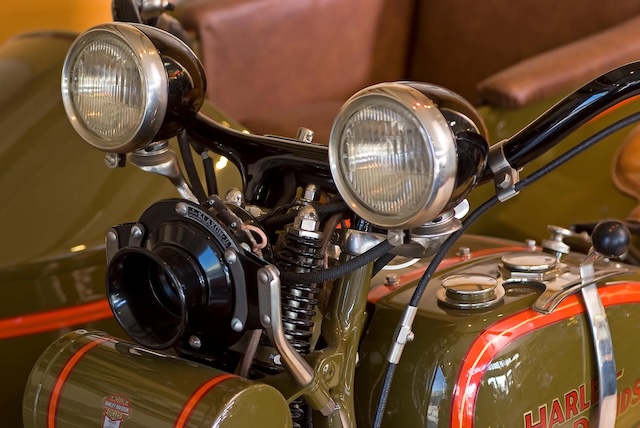
Design and Aesthetic Appeal
The Harley-Davidson 74ci Model V was not just about performance—it was also a beautifully designed motorcycle. The bike came in a classic Olive Green color with vermilion striping, creating a striking and traditional appearance. Unique features for the 1930 model included twin bullet headlights and a round toolbox mounted ahead of the fork springs, distinguishing it from other motorcycles of its time. The stylish design was paired with a smooth, stable ride, making it a popular choice among motorcyclists who valued both form and function.
Discovery and Restoration of the Harley-Davidson 74ci Model V
In 1995, the Harley-Davidson 74ci Model V and its sidecar were discovered in Chile, stored away in a garage and in remarkably original condition. The bike was carefully shipped to the United States, where it underwent a meticulous restoration process. The restoration aimed to return the motorcycle to its original form, with attention to detail in every aspect. In 1996, Santa Cruz Harley-Davidson acquired the restored bike, and it has since been displayed as part of their collection, representing both the legacy and craftsmanship of Harley-Davidson.
Versatility and Usage of the Harley-Davidson 74ci Model V
The 74ci Model V was versatile, serving both as a solo motorcycle and as a sidecar rig. Originally priced at $340 for the solo model, the 74ci was an affordable luxury at the time. While it may not have been the fastest motorcycle on the road, its smooth ride, excellent balance, and adaptability made it a valuable motorcycle for both recreational riders and those who needed a reliable vehicle for sidecar use.
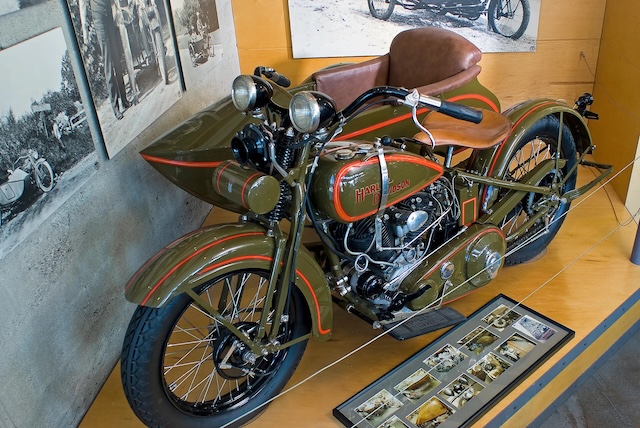
Video
Check out this video to learn about the 1960 Sidecar Boat and its unique design!
Conclusion: A Motorcycle that Endures
The Harley-Davidson 74ci Model V and Sidecar 1930 stands as a testament to the company’s ability to innovate and adapt in the face of adversity. Despite its early production issues, the Model V became an iconic motorcycle, offering both style and performance. The discovery and restoration of a 1930 Model V in the 1990s revived an important part of motorcycling history, allowing new generations to appreciate the craftsmanship and legacy of Harley-Davidson. As a symbol of resilience and quality, the 74ci Model V continues to inspire admiration and respect in the world of vintage motorcycles.

